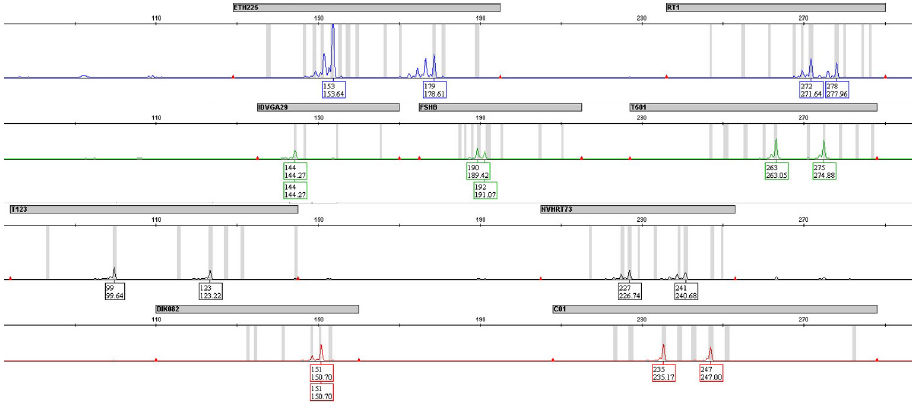Abstract
Deer is mainly raised for the deer velvet antler used as herbal medicine in Korea, but the self-sufficiency rate of deer velvet antlers in Korea is low and there is no systematic system. Therefore, this study was conducted to establish a microsatellite (MS) marker set for individual identification and paternity test of elk (
Figures & Tables

Fig. 1. Multiplex PCR and size fractionation using 9 MS markers on an ABI-3730xl genetic analyzer.


